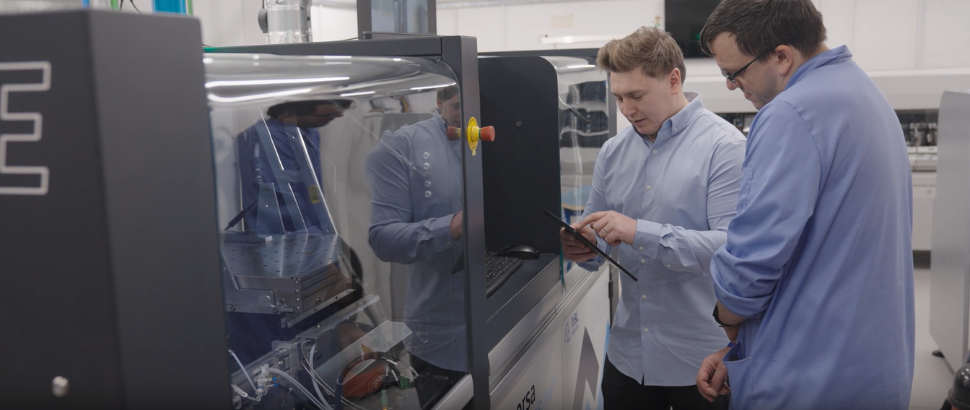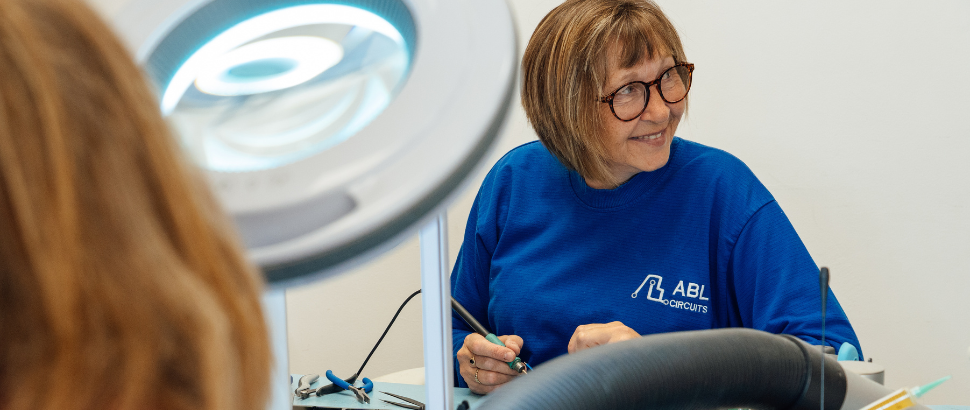News, Blogs & Articles

The Crucial Role of PCBs in Aircraft Avionics and Flight Control Systems
Case Study
August 24, 2023
Jump to section:
PCBs are pushed to the limits when it comes to aircraft avionics. In aircraft, PCBs are exposed to many harsh environments, including exposure to rapidly changing temperatures, vibrations and ionising radiation. But the durability and longevity of these boards are crucial, as degradation and faults can result in catastrophic consequences.
In this post, we’re going to explore why PCBs in aircraft avionics and flight control systems are a vital component in aerospace tech, including the key functions of PCBs and the challenges and innovations faced with PCB design.
Understanding PCBs and their importance in aviation
As with all electrics and engineering, PCBs are an essential component in the manufacturing, performance, functionality and reliability of aircraft. Without high-performing and dependable PCBs, aircraft cannot operate as intended – which of course, risks the safety of aircraft crew and passengers.
Not only is safety a paramount concern, but PCBs are important in aviation for several reasons:
- All aspects of avionic systems rely on electronics, and therefore PCBs. This includes flight control, communications, navigation, radar and more.
- Space and weight are limited on aircraft, and PCBs used in aviation must be designed with this in mind.
- PCBs must maintain signal integrity at all times to provide accurate, real-time information.
- The maintenance of PCBs in avionics, or the ability to replace them quickly, is important to ensure downtime is kept to a minimum.
- PCBs used in avionics must abide by strict requirements and be compliant with industry regulations.
- PCBs should have backup components and redundant systems to ensure no disruption to operations in the event a component fails.
Key functions of PCBs in aircraft avionics
There are many key functions of PCBs in avionics, such as:
- Signal routing and interconnection, which ensures communication between processors, sensors, actuators, displays and more.
- Microprocessors on PCBs undertake complex data processing to help manage flight data and provide pilots with accurate, real-time information.
- PCBs help integrate sensors and process their signals related to altitude, temperature, airspeed and more.
- Real-time and reliable communication is vital, which the PCB achieves through communication interfaces.
- PCBs house control logic circuits to enable total aircraft control as well as flight management systems to enable guidance information.
- Power distribution and regulation are aided by voltage regulators, power conditioning circuits and more.
- They have the ability to withstand harsh environments.
The demand for high-reliability PCBs in aviation
Should a fault develop in a PCB and the backup components and redundant systems also fail, the results can be devastating. PCBs simply must have the performance, durability and longevity required to prevent issues from occurring. As a result, there are strict compliance requirements that must be adhered to.
For example, there are many standardised quality management systems within the aerospace industry, including AS9100, MIL-PRF5511 and AS9006A (among many others) that have specific stipulations when it comes to PCBs, components and fabrication.
Some of the rules and regulations that must be adhered to include:
- Press-fit components should be soldered to the board to ensure durability when exposed to vibrations.
- 3 or 4 oz of heavy copper should be used to maximise current carrying capabilities.
- Gold, HASL and ENIG surface finishes offer better soldering capabilities and ensure a longer shelf-life.
- The dielectric material thickness should be, at a minimum, 3.5mm to ensure strength.
- There should be an 8mm drill to copper clearance.
- Aluminium enclosures protect from electromagnetic interference.
Testing and inspection are also a crucial part of the manufacturing process. This ensures any defects are identified and faults are fixed. X-
PCBs in flight control systems
As we’ve already highlighted, PCBs play a major role in aircraft flight control systems. They’re responsible for the manoeuvrability, stability and – ultimately – the safety of the aircraft, from the moment it leaves the gate until the passengers disembark. As with every other PCB used in avionics, those used in flight control systems must also meet stringent requirements.
For example, sensors such as gyros, accelerometers and air data sensors collect and process data in real-time, then communicate it to the pilots in the form of information relating to altitude, airspeed, temperature and more. This must be done accurately and instantaneously, without fail.
To withstand the harsh environments that PCBs are exposed to in air travel, rigid PCBs are used in flight control systems. These PCBs use copper and aluminium substrates which means they’re hardy and reliable. As well as their use in flight control systems they’re also used in control tower electronics and temperature sensors.
PCBs are at the heart of every flight control system. Without them, data couldn’t be collected, processed and communicated quickly and accurately.
Challenges and innovations in PCB design for flight control systems
Being such a crucial part of any flight control system, there are challenges that must be overcome during the PCB design process. These include:
- Ensuring the reliability of PCBs in harsh conditions.
- Signal integrity must remain to prevent interference and degradation.
- Redundancy and fault tolerance to ensure continued operation in the event of failure.
- Space and weight limitations.
- Rapid development cycles.
To meet these challenges, innovations should constantly be strived for, such as:
- Advancements in materials.
- Multi-layer stackups.
- Embedded components.
- Advanced EMI shielding.
- Wireless comms interfaces.
- High-density interconnect (HDI) tech.
- Thermal management techniques.
- System-on-chip integration.
The future of PCBs in aircraft avionics and flight control systems
The future of PCBs in avionics and flight control systems will continue to introduce space, time and cost-saving innovations that also improve the performance, reliability and longevity of PCBs. Just some of the possible future development trends include:
- The utilisation of AI and machine learning.
- More sustainable PCB design and manufacturing.
- Rapid prototyping.
- Further miniaturisation and integration.
- Enhanced fault tolerance.
- Flexible and stretchable PCBs for use in flight control systems.
- New cybersecurity technologies and processes.
- Wireless power and comms.
- High-speed data communication.
- Advanced materials and substrates.
- 3D integration and stacking.
Preparing for the future: the role of manufacturers
PCB manufacturers play a vital role in the development of PCBs and in ensuring these future trends come to pass. Aviation requires constant innovation and PCB manufacturers can be at the forefront of that. Below are the ways manufacturers, such as ABL Circuits, are preparing for these future trends:
- Staying on top of industry news and updates to cultivate expertise and develop their knowledge. This includes any changes to compliance regulations and requirements.
- Undertaking research and development to discover new technologies, processes and materials.
- Collaborating with other industry experts to share knowledge and insight.
- Having a solid understanding of the supply chain to prevent issues and delays which can stall innovation.
- Always developing knowledge through training and upskilling.
- Considering the environment to utilise eco-friendly materials, avoid hazardous materials and reduce waste.
- Being open and flexible to customisations across the entire process.
- Having the ability to grow as demand increases.
- Stringent testing and quality control procedures.
Conclusion: navigating the world of aviation PCBs
In a complex and ever-evolving landscape such as aviation, PCB manufacturers play a key role in helping the industry take big steps forward in improving reliability, performance and safety.
There are so many parts to the PCB jigsaw that must all come together, from environmental considerations and space limitations, to how they withstand harsh environments and maintain performance in the event of component failure. Each comes together to ensure pilots can do their jobs and passengers safely make it from A to B.
For more information, read our aerospace industry page and discover more about what ABL Circuits does in this complex industry. Or get in touch today and discover how we can help you with award-winning PCB design and manufacturing.
News, Blogs & Articles















